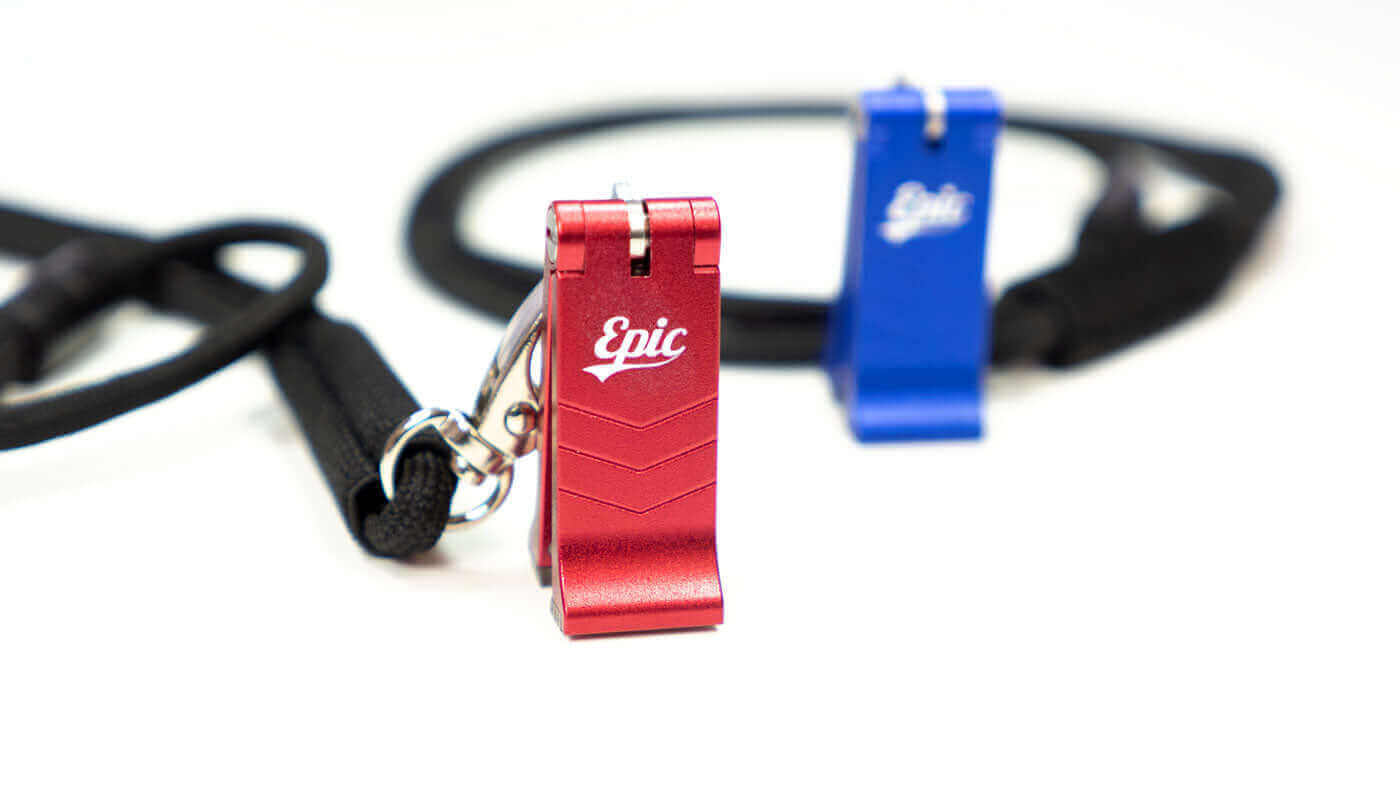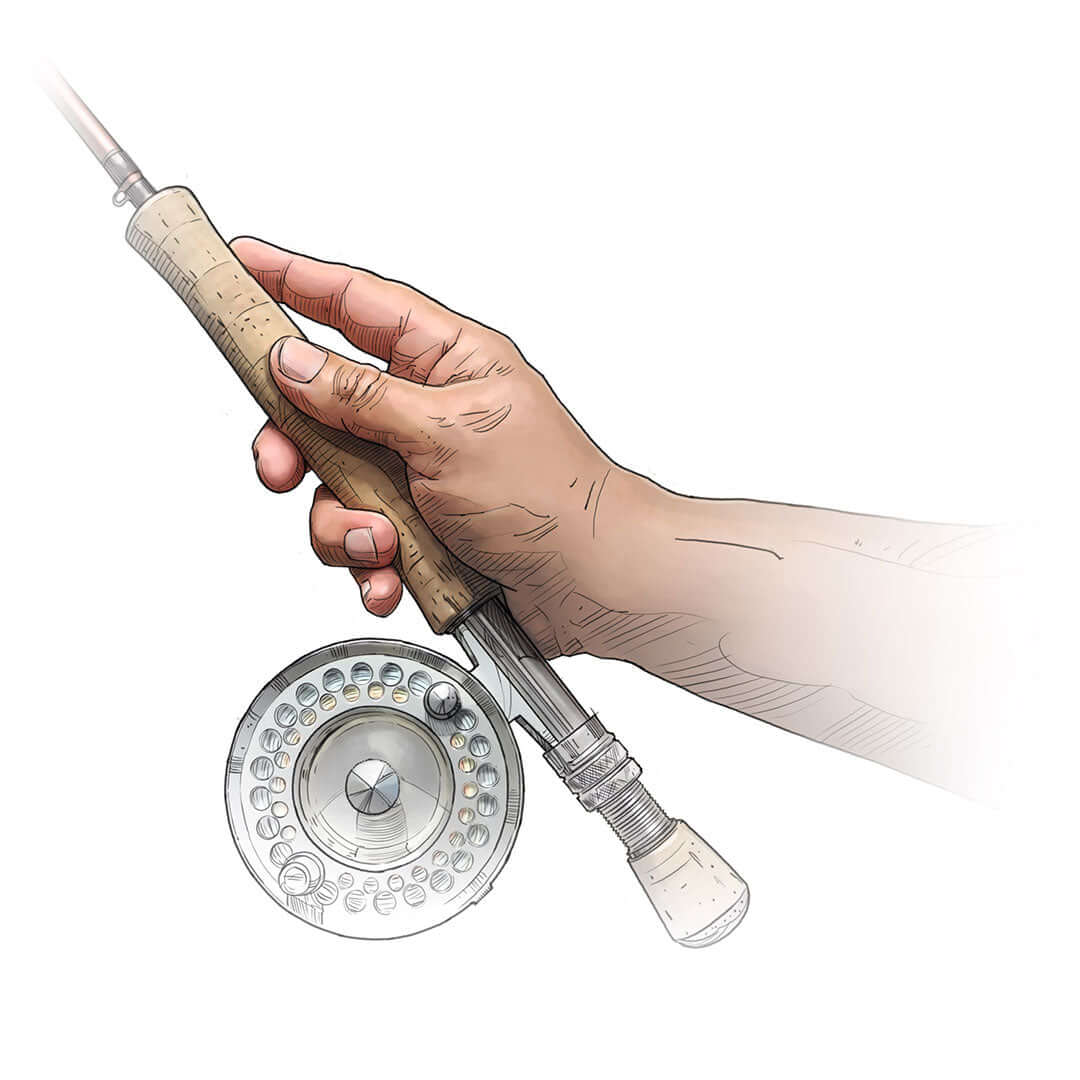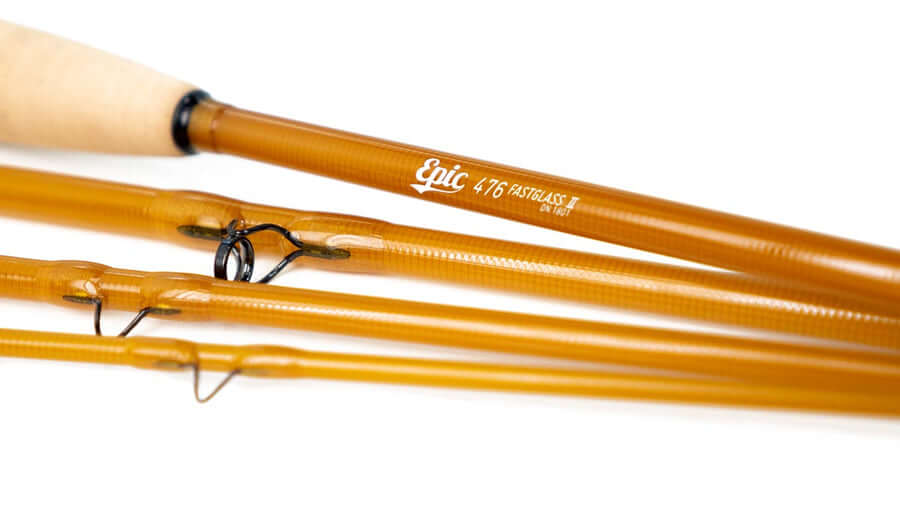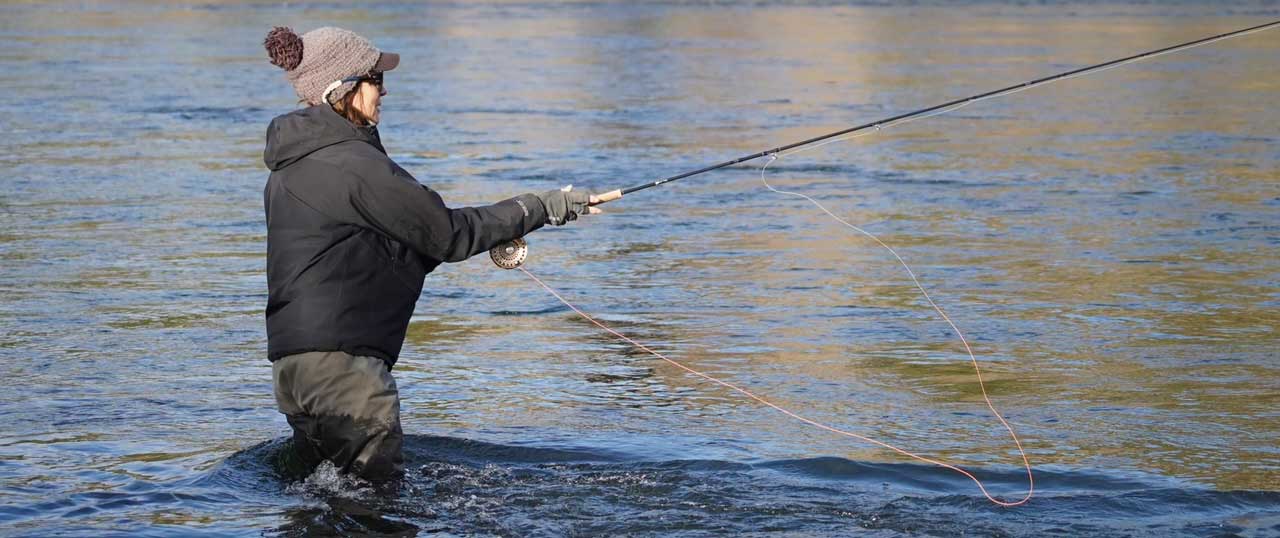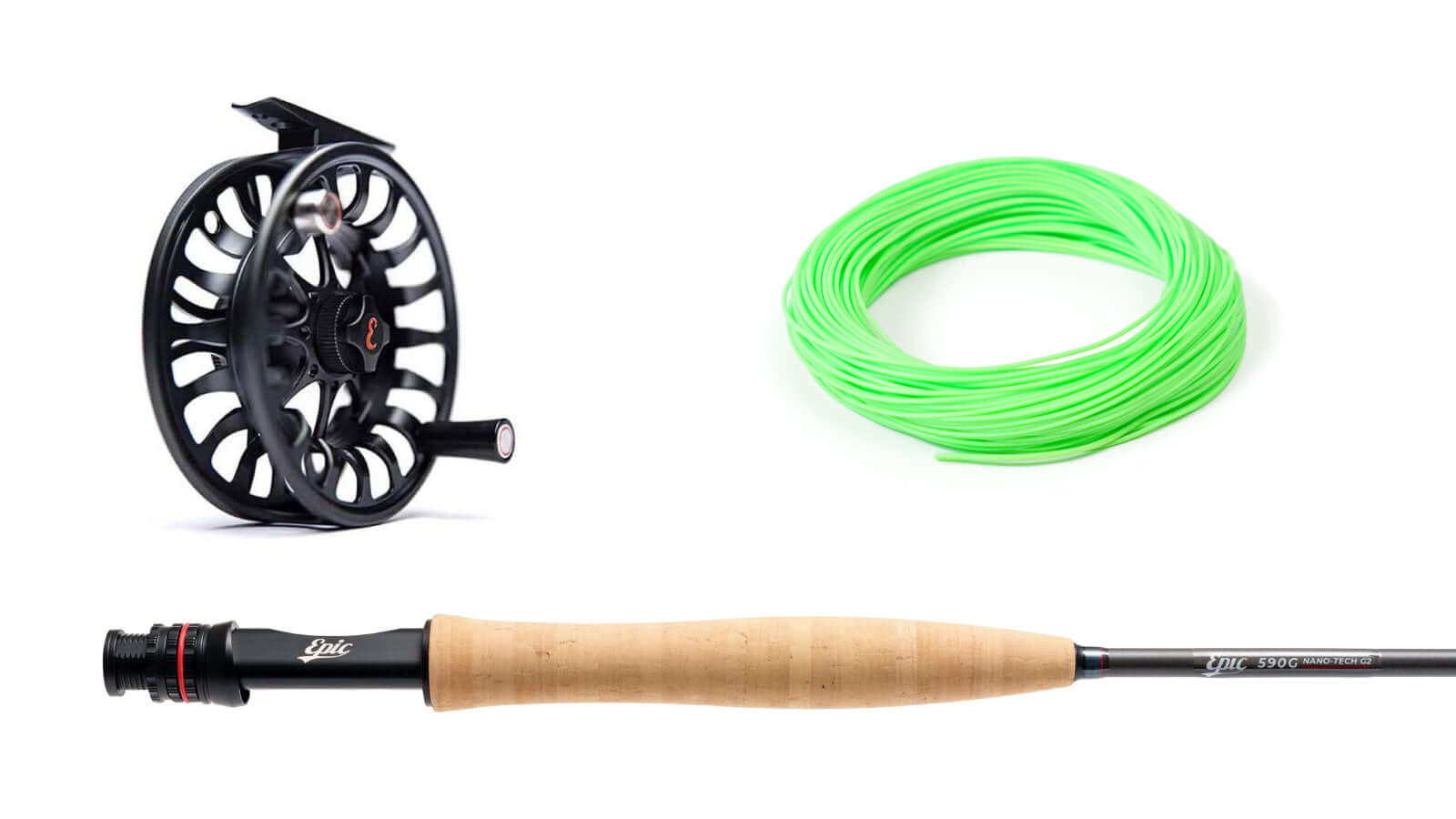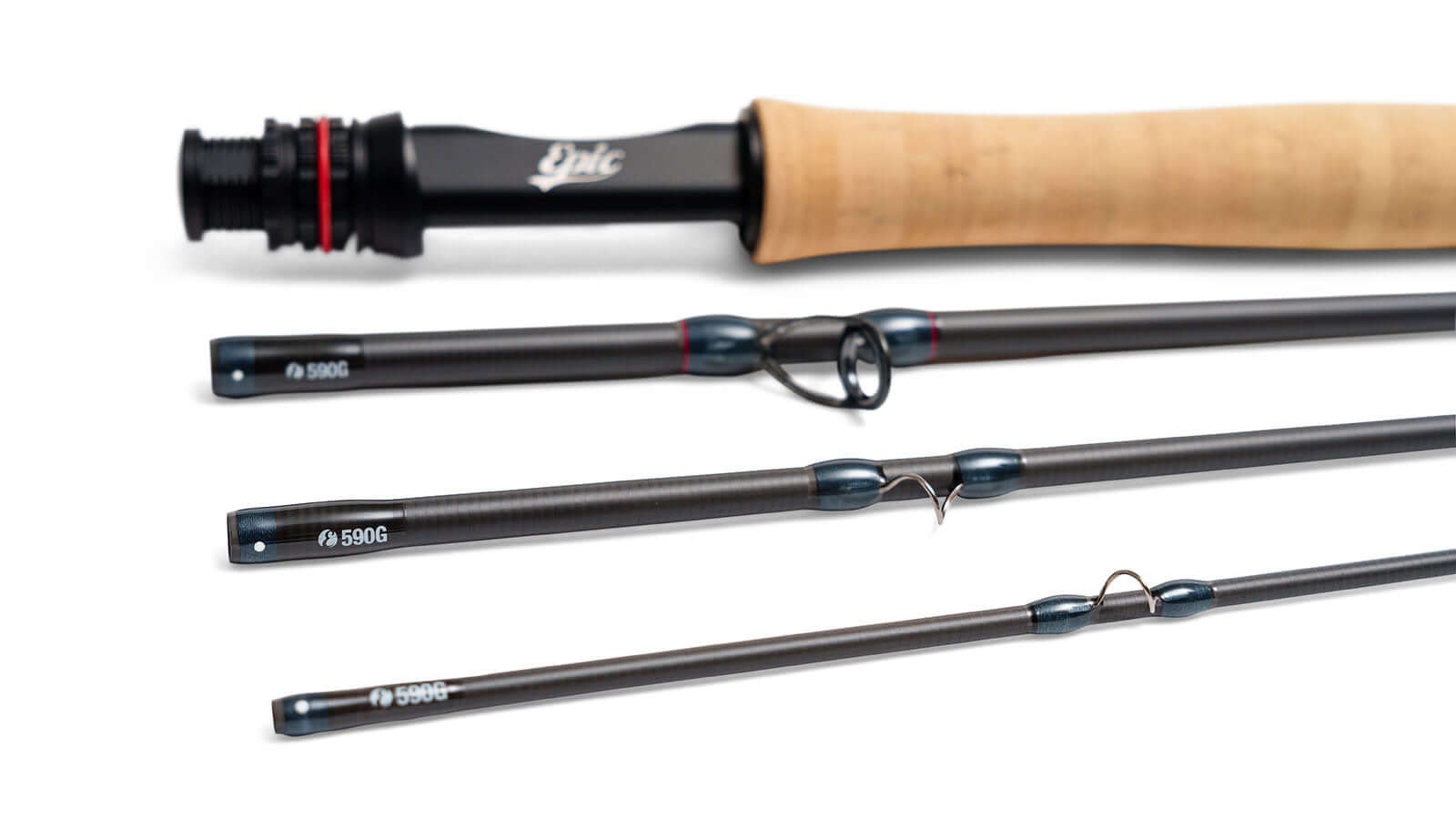Is it time for a Grip Switch?
When the subject of grip comes up and I express that I prefer the Index on top, the response is usually something like, “I can see using that for little short casts” followed by a schoolmarm-like finger pointing motion. But you might be surprised to find that, when done properly, the index on top grip offers the same power with less effort expended by the caster, than the Thumb on top or the V-grip. The thumb on top is, I believe, the most popular grip used today, so I will use it for comparison in this article.
The index finger on top is a cornerstone of my casting style. I use it when fishing, because it is efficient. I use it in teaching because it makes my job easier and accelerates the learning process. It makes sense to me. As I see it, there are four major reasons for choosing this grip and here they are in order of importance.
Leverage
As you know, the fly rod is a lever. Think of the hand as the lever that works the lever. Comparing the two grips, you will notice that the index finger extends considerably further up the cork than the thumb. Simply put, the longer the lever, less is the effort required to operate it. I have been told that the thumb is stronger than the index finger and I don’t doubt it. But with the added leverage of the index finger, strength is no longer the issue. The key to getting the most from this grip is to apply the power with the finger tip. People are often surprised to find that I use this grip when using 10 or 12 weight rods, but there is no reason to change grip with equipment and the added ease of casting is especially noticeable with heavier rods.
The Stop
The back cast is the foundation of the fly cast. If the back cast doesn’t straighten behind the caster, problems occur. Usually, the cause isn’t lack of power, but rather a failure to stop the rod firmly without allowing the rod tip to travel too far back. If you were to form an imaginary pistol with your casting hand and raise it so your finger is pointing skyward, you’d notice that the thumb is pointing back in a horizontal position. The index on top provides a naturally correct stopping point for the back cast. In fact, it is difficult to go too far back using this grip.
Attitude
Perhaps the most significant difference in the two grips is the attitude or position of the hand, wrist and forearm during the cast. With the thumb on top, the hand and arm are raised and lowered in the same manner that one would use to drive a hammer or chop with a hatchet.
When the index finger is placed on top, the hand, wrist and forearm flatten – as if to push a door open. This motion encourages the caster to continue the stroke forward, stopping the hand at eye-level, rather than driving it downward.
Accuracy
For the same reason that it is easier to be more accurate with a rifle than a pistol, I believe it is easier to hit a target with the index on top. I favor a more vertical cast than many, and find that when I point the end of my index finger (not the rod tip) at the target I get a more accurate cast than with the shorter thumb. An unwanted curve in the layout – especially at longer distances – can oftentimes be eliminated instantly, simply by switching to the index on top grip, as straight tracking seems easier to achieve.
In addition to the above reasons for choosing the index on top, there is one more subtle point I will offer. As you sit reading this article, reach over and feel the surface of the table, desk or chair. My guess is that you used your fingertips - not your thumb. As humans, we are conditioned to feel with our fingertips and I always encourage students to cast with a loose grip relying on feel. In fact, one exercise that I use frequently is to have the students close their eyes and cast. In most instances, there is no difference between the eyes open and the eyes closed cast. I believe that the feeling in the index finger is keener and sends a sharper signal.
Try it for yourself
Here is a quick tip for the index on top grip. Start by loosely gripping the rod slightly closer toward the butt than normal – I like to place the heel of my hand on the reel seat itself. Pretend that there is a button precisely at the point where the tip of the index finger contacts the cork. Make sure that the fingertip is the only part of the finger that touches the cork. Make your pick-up by placing the rod tip low and applying pressure with the inside of the middle finger to make the back cast, stopping the rod firmly with the index. Now, smoothly move the rod forward in a straight line and in the middle of the stroke, push that imaginary button with your fingertip and let off. I think that you will find that the power delivered by that simple push is sufficient to unroll the fly line and straighten the leader.
Whichever grip you choose, it should compliment a cast that is smooth and efficient, or as I tell my students, “Save your muscles for fighting fish.”
Author

Joe Mahler is one of the USA's leading fly casting instructors and author and illustrator of “Essential Knots & Rigs for Trout” and “Essential Knots & Rigs for Salt Water”. You can Book a fly casting lesson with Joe via his website here



